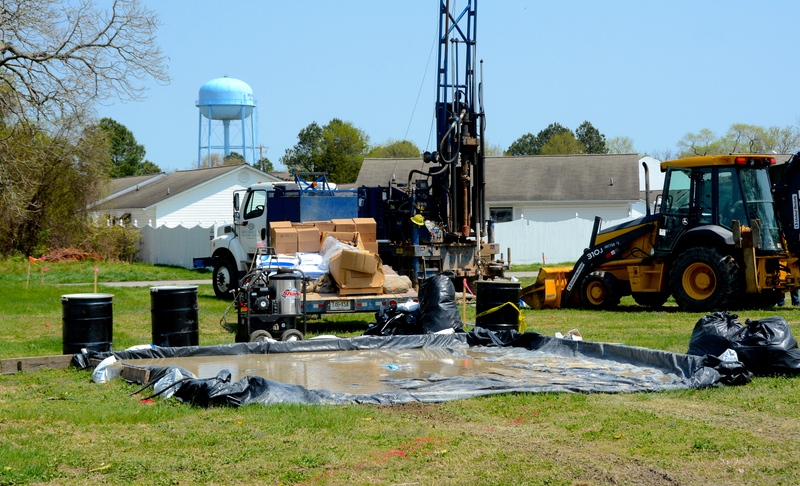Vaccine manufacturer fined $2.75 million

A nearly $3 million settlement – the largest in the history of Delaware's Hazardous Substance Cleanup Act program – will reimburse costs incurred by a state agency after it cleaned up a contaminated site near Millsboro.
Department of Natural Resources and Environmental Control Secretary David Small ordered Mallinckrodt Veterinary to reimburse DNREC for more than $2.75 million spent to clean up its former poultry vaccine manufacturing plant, according to a DNREC press release.
The settlement will cover costs incurred by DNREC for testing and cleanup from 2006 to 2009, said Tim Ratsep, program administrator with the Division of Waste and Hazardous Substances. Ratsep said DNREC spent an additional $100,000 that was written off with the settlement.
Ratsep said the site is still contaminated, and work is ongoing. The site was named to the U.S. Environmental Protection Agency's National Priorities List in 2009; the responsible party – Mallinckrodt Veterinary – is subject to all future costs.
Crews are currently installing wells as part of the remedial cleanup to monitor groundwater and inject materials into the groundwater to remediate contamination, Ratsep said.
“There is not a defined end point yet,” Ratsep said. “It's going to be quite a while.”
In 2005, the state Division of Public Health's Office of Drinking Water found tricholoroethylene, or TCE, contamination in a nearby public well, which resulted in an immediate caution for Millsboro and Dagsboro residents to avoid using the public water supply, DNREC reported. Ratsep said water bottles were distributed for those residents.
|
More about TCE
Source: U.S. Environmental Protection Agency |
||||
The advisory was lifted in December 2005, after a carbon filtration system was installed by the Town of Millsboro to treat groundwater to remove TCE. There is ongoing treatment at that well, Ratsep said.
TCE is commonly used in vapor degreasing of metal parts, was used in manufacturing processes at the plant from 1952 to August 1999.
TCE can result in both short-term and long-term ailments, including damage to the human central nervous system and organs including the liver, kidneys, immune system and endocrine system. Recent analysis has found TCE exposure can be associated with several cancers in humans, specifically kidney, liver, cervix and lymphatic system cancers, according to the U.S. Environmental Protection Agency.
DNREC handled initial investigation to identify the source of pollution between Dec. 12, 2005, and Nov. 15, 2007, by completing a groundwater investigation including analysis of nearly 300 samples from 95 borings. A high level of TCE contamination was found at 225 W. DuPont Highway, which DNREC confirmed as the source of the contamination.
The site is now a vacant lot; the building was demolished in December 1999. Previous owners and operators included Hiram N. Lasher, Delaware Poultry Laboratories Inc., Sterwin Laboratories, Mallinckrodt Veterinary Inc. and Schering-Plough Animal Health Corporation.
In 2009, the state requested that the EPA add the Millsboro TCE site and the Millsboro public well site to its National Priorities List. That same year, the EPA became the lead regulatory agency after Delaware officials showed the state did not have the resources to continue remediating the contamination, Ratsep said.
DNREC continues to review and comment on site remediation documents and will be considering a Natural Resource Damage Assessment against the responsible parties in the future.
The multimillion-dollar settlement covers costs associated with the removal and disposal of two tanks and TCE-contaminated contents, the removal of about 210 tons of affected soils and debris, and the cost of excavation and transportation to a disposal facility, as well as soil and soil gas vapor samples, installation of groundwater monitoring wells, a chemical oxidation pilot study, a preliminary risk assessment for the site, hydraulic evaluation, preliminary site characterization, preliminary risk evaluation and a pilot re-injection test for treated groundwater.
Mallinckrodt also agreed to pay for future unreimbursed oversight costs for DNREC and entered into administrative settlements with the U.S. EPA for the investigation and remediation of the Millsboro site, the release stated.






















































